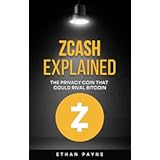The global financial landscape is constantly evolving, with monumental shifts often brewing beneath the surface of everyday news. Recently, an extraordinary claim emerged from the Economic Forum, articulated by Anton Kobyakov, a senior advisor to Vladimir Putin. He suggested that the U.S. is strategically preparing a “crypto cloud” to quietly devalue its staggering $37 trillion national debt, leaving other nations to bear the financial brunt.
While Russia’s interpretation might be slightly off the mark regarding the exact mechanics, the underlying assertion of a significant monetary reset and debt devaluation is surprisingly accurate. As the accompanying video highlights, this isn’t about printing digital dollars out of thin air in the way some might imagine. Instead, it’s a far more sophisticated and powerful strategy involving stablecoins and previously dormant bank reserves, orchestrated through initiatives like the Genius Act.
Understanding the Looming Monetary Reset and U.S. Debt Strategy
The notion of the U.S. devaluing its national debt, currently standing at an astonishing $37 trillion, might sound like a far-fetched conspiracy. However, history offers a clear precedent for such actions. Monetary resets and currency devaluations are not new phenomena; they are recurring patterns in the annals of global finance.
Consider a few pivotal moments in U.S. economic history:
-
1933: The Gold Confiscation. President Franklin D. Roosevelt, through Executive Order 6102, unilaterally confiscated America’s gold at $20.67 per ounce. Overnight, he revalued it to $35 an ounce, effectively enacting a 69% devaluation of the dollar relative to gold. Imagine if your $100 in savings suddenly bought only $31 worth of goods; that was the reality for many, while the government’s debt became significantly cheaper to repay.
-
1971: Nixon Shocks the World. President Richard Nixon famously closed the “gold window,” ending the dollar’s convertibility to gold. This move unilaterally severed the dollar’s last tie to a tangible asset. Since then, the U.S. dollar has astonishingly lost 96% of its purchasing power, a silent, continuous devaluation impacting everyone’s savings.
-
1985: The Plaza Accords. This international agreement saw five major economic powers coordinate to intentionally devalue the U.S. dollar by 25% over two years. It was a planned, executed devaluation, demonstrating that such large-scale financial maneuvers are not only possible but have been deployed to address economic imbalances.
These historical events underscore a critical point: financial resets are cyclical. Every 40-50 years, major monetary shifts occur, and many experts believe we are currently due for another one. The current plan, however, is distinct from past devaluations, which relied on gold confiscation or international agreements. Today, the mechanism is far more intricate, leveraging the expansion of the money supply and the innovative architecture of the crypto market.
The Hidden Mechanics of Modern Dollar Devaluation
In the absence of a gold standard, dollar devaluation primarily occurs through the expansion of the money supply. This leads to what is often mistakenly called “inflation,” but is more accurately described as a reduction in the dollar’s purchasing power. When more dollars chase the same amount of goods and services, prices inevitably rise, and your dollar buys less.
Looking at the M2 money supply, we’ve witnessed a dramatic expansion. From January 2020, when it stood at $15.4 trillion, it ballooned to $21.9 trillion today. That’s a 40% expansion in just four years. This injection of trillions of new dollars, without a corresponding increase in production of goods like housing or oil, leads directly to increased prices. For example:
- Gas prices: up 50%
- Home prices: up 50%
- Property insurance: up 70%
- Food (steak, milk, eggs): up 25-30%
This isn’t just inflation; it’s a profound devaluation where your dollars simply have less value. The $37 trillion national debt technically remains $37 trillion on paper. Yet, what that amount can purchase today is significantly less than it could in 2020. The government has effectively reduced the real burden of its debt by 40% without defaulting or negotiating—they’ve simply printed their way out of a substantial portion of it.
Stablecoins: The New Demand Engine for U.S. Debt
The world, particularly economic giants like China and Japan, is keenly aware of this ongoing devaluation. This understanding is precisely why China has been steadily dumping U.S. treasuries, reducing its holdings by $1 trillion to $756 billion, and why Japan is also selling. Foreign ownership of U.S. debt has dropped significantly from 34% to 23%, creating a pressing need for new buyers of government bonds.
This is where stablecoins enter the picture, not as a means to “print” new digital dollars as some Russian advisors might assume, but as a mechanism to generate perpetual demand for U.S. debt. The recently passed “Genius Act” (likely referring to proposed legislation or regulatory frameworks, emphasizing a brilliant stroke of policy) is crucial here. It mandates that every stablecoin must be backed by U.S. treasuries or cash, with no exceptions.
Imagine if you wanted to issue a billion dollars in USDT. Under this new framework, you would need a billion dollars in U.S. Treasury bills to back it. This creates an automatic, systemic demand for treasuries. Currently, Tether holds $127 billion in U.S. treasuries, and Circle holds $55 billion. Combined, these two stablecoin issuers are already the 18th largest holders of U.S. debt globally, surpassing countries like Germany and South Korea. Experts like Scott Bessent, a former advisor to President Trump, project stablecoins to hit an astonishing $3.7 trillion by 2030.
Every individual in Argentina seeking refuge from hyperinflation by buying USDT, or every business in Turkey avoiding the Lira by using USDC, is unknowingly becoming a buyer of U.S. treasuries. They are funding the U.S. deficit, creating a guaranteed $3.7 trillion in demand for U.S. debt. This ingenious system diverts global capital into U.S. treasuries, stabilizing the government’s borrowing needs while the dollar’s value silently adjusts.
Activating Sterilized Reserves: The Unleashing of Trapped Capital
The question then becomes: where do all those dollars come from to back these stablecoins? The answer lies in what are known as “sterilized reserves.” Currently, U.S. banks hold $3.2 trillion in excess reserves parked at the Federal Reserve. This money has been sitting idle since quantitative easing programs initiated back in 2008.
These are essentially “dead money” reserves, not circulating in the economy and earning minimal interest (around 0.5% in Interest on Excess Reserves, or IOER). The Genius Act offers a groundbreaking mechanism: banks can now use these Fed deposits as stablecoin backing. Imagine taking a billion in these frozen excess reserves, and using it to back a billion in stablecoins. It’s the same money, but it’s no longer trapped; it’s activated and moving into the market.
As this $3.2 trillion in previously frozen capital starts circulating through stablecoins, it inevitably weakens the dollar further and contributes to the ongoing devaluation of the $37 trillion debt. This isn’t about creating new money but about unleashing what has been trapped for years. The effect is similar to printing, as it expands the effective money supply available for transactions, driving prices higher and devaluing the dollar.
The Global Response: Central Banks Turn to Gold
The world’s central banks are not oblivious to these seismic shifts. They observe the dollar’s devaluation, the expansion of the money supply, and the strategic deployment of stablecoins. Their response is telling: a dramatic pivot towards gold.
Gold recently hit an all-time high of $3,775.10 an ounce in September, a clear indicator of market uncertainty and a flight to safety. Central banks are buying gold at the fastest pace since 1967, accumulating over 1,000 tons annually for four consecutive years. This includes:
- 2022: 1,082 tons
- 2023: 1,037 tons
- 2024: 1,045 tons
- 2025: 669 tons (through Q3, on pace for another 1,000+ ton year)
Who are these buyers? It’s not just fringe investors; these are the most conservative financial institutions on Earth. Poland, for instance, bought 67 tons this year alone. The Czech Republic has bought gold for 29 straight months, tripling its reserves since 2023. Turkey has purchased gold for 26 consecutive months. And China, despite officially reporting 36 tons added in nine straight months, is widely believed to be accumulating much more, potentially double or triple the reported figures.
These central banks aren’t speculating on price; they are protecting their national wealth from the impending dollar devaluation, understanding that the activation of sterilized reserves and the $3.7 trillion in stablecoin demand signals a profound shift. They are not waiting to “hold the bag” when the U.S. effectively exports its inflation globally.
Bitcoin and Strategic Reserves: A New Paradigm
While the focus is on gold for central banks, the conversation also extends to Bitcoin. While figures like Scott Bessent have publicly stated “no taxpayer dollars for Bitcoin” regarding a Strategic Bitcoin Reserve (SBR) bill, the approach might be more subtle. History shows a pattern: private innovation first, then government utilization.
Imagine SpaceX building rockets, then NASA contracting them. Or Amazon building AWS, then the CIA using the servers. The private sector takes the initial risk, building the infrastructure and accumulating assets, and then the government captures or leverages that value. It’s plausible that a “Strategic Bitcoin Reserve” is being built not directly by the government, but through private companies like MicroStrategy, Marathon, and Riot, and via the rapidly growing Bitcoin ETFs. The government may simply be waiting to take its share or leverage these private holdings.
Navigating the Reset: What You Can Do
Putin’s advisor was indeed right about the core outcome: the U.S. is going to devalue its $37 trillion debt. But it’s achieved not by printing stablecoins, but by activating $3.7 trillion in sterilized reserves and creating massive, guaranteed demand for U.S. treasuries, effectively exporting inflation globally. The reset is not a single event but an unfolding process, with the Genius Act already law and the mechanisms firmly in place.
The critical takeaway for individuals is to learn from the central banks. They are dumping fiat currency and moving into hard assets. For your own wealth preservation strategy, consider assets that historically perform well during periods of dollar devaluation and monetary expansion. This includes gold, which has always served as a store of value. Minerals like lithium also present opportunities in an increasingly electrified world. Real estate can be a hedge against inflation, as property values tend to adjust upwards with the money supply.
However, Bitcoin stands out as a particularly agile asset. It has a proven track record of significant appreciation during periods of expanding liquidity. When the dollar was pulled from the gold standard in 1971, gold surged 23 times from $35 to $800 an ounce. Bitcoin often achieves similar gains in much shorter cycles. As we navigate this significant US crypto reset and the ongoing efforts to devalue $37 trillion debt, holding hard assets like Bitcoin becomes a crucial part of a resilient financial plan.







